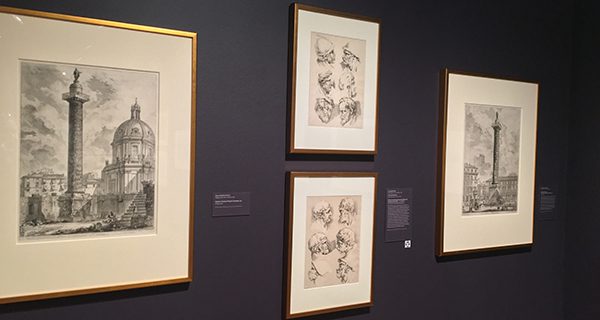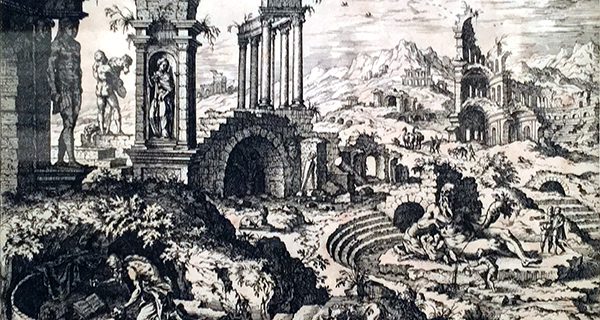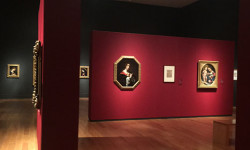[ccfic caption-text format="plaintext"]
By Katrina Margolis
Hometown Weekly Reporter
The Davis Museum at Wellesley College has an extraordinarily unique collection of work, and hosts exhibits on everything from the modern Bauhaus aesthetic to the Medici’s court painter.
Currently on view is a collection of prints, drawn from the Davis collections, showcasing the work of Giovanni Battista Piranesi, one of the greatest printmakers of the eighteenth century. The exhibit follows a sample itinerary through the city, positioning the work of Piranesi alongside his contemporaries. Born in Veneto, he traveled to Rome in 1740, where he studied printmaking and worked with Giambattista Nolli on his monumental map of Rome.

Piranesi’s “Vedute di Roma” was completed over three decades, and became so iconic as to change people’s views of these historic monuments. Photos by Katrina Margolis
Artists, dealers and printmakers benefitted from growth in demand in the art market. Piranesi began his “Vedute di Roma” in 1747, which was a series of contextualized views of the city. “Due to their dynamic compositions, dramatic lighting effects, and grand scale, his work was more broadly collected than that of his contemporaries.”
His collection included 135 prints which he created over decades. It was not envisioned as a unified project or portfolio, however. Until his death in 1778, the collection kept growing. It included larger scale works which allowed Piranesi to “create sweeping panoramas filled with both carefully-studied and imagined details.”
Throughout the 18th century, his works became iconic, and many tourists expected to see Piranesi’s vision when they visited the actual monument. In October 1787, Johannes Wolfgang von Goethe visited the backs of Caracalla. He remarked that, “the ruins can hardly find any satisfaction to the present-day eye accustomed to Piranesi’s painterly effects.”
“Reframing the Past: Piranesi’s Vedute di Roma” will be on exhibit through July 9.





















